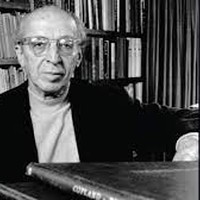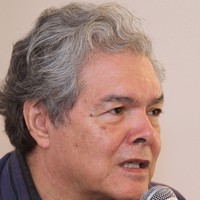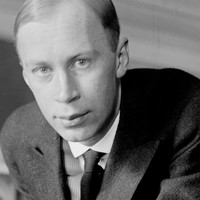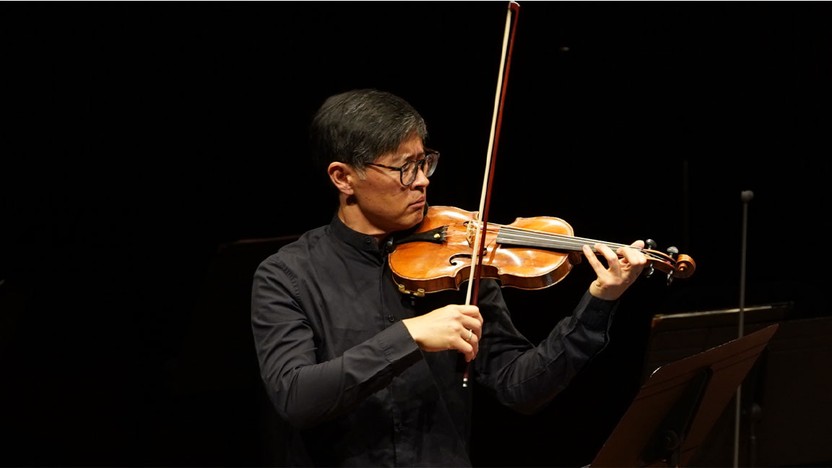Details

Aaron Copland
Three Latin-American Sketches
Aaron Copland’s broad textures and open harmonies in works such as Appalachian Spring and Rodeo defined a quintessential “American” sound, elevating him beyond the niche of classical music to the status of cultural icon. It was music from outside our borders, though, that inspired his first popular success in 1936, El Salón México. Decades later, in the sunset days of his career, Copland again turned south for inspiration in Three Latin-American Sketches, commissioned in 1971 by the New York Philharmonic. It turned out to be one of Copland’s final compositions, even though he lived until 1990. He wrote that his creative wellspring ceased, “exactly as if someone had simply turned off a faucet,” and by the mid-1970s he suffered from memory loss and other Alzheimer’s-like symptoms.
The first movement, Estribillo (“Refrain”), was the only new material for Three Latin-American Sketches; it revolves around a dancing refrain, first heard in the lower strings and then passed among the orchestra. Copland recycled the other movements from Two Mexican Pieces, composed in 1959 and premiered in 1965. Paisaje Mexicano (“Mexican Countryside”) turns to lush string textures and lyrical woodwind melodies for a rural snapshot, with a tempo indication of “soft and sad.” Danza de Jalisco (“Jalisco Dance,” named for the Mexican state of Jalisco) adapts the alternating duple and triple meters heard often in Flamenco music and other styles in Spain’s sphere of cultural influence, the same pattern Copland’s one-time protégé Leonard Bernstein used in the song “America” from West Side Story (which predated the Copland movement by two years). Copland’s signature sound comes through in the crystalline scoring, with prominent parts for piano, wood block, xylophone and handclaps.
Aaron Grad ©2011

Arturo Márquez
Danzón No. 2
 Listen to Audio
Listen to Audio
Sergei Prokofiev
Violin Concerto No. 2
“The opening of the second movement is one of the greatest melodies ever written for violin. In the wrong hands, it can become overly sentimental, something which Prokofiev warned violinists to avoid. The combination of vulnerability and tenderness that comes across in Patricia’s recording of the piece was one of the first things that drew me into her artistry.” – Kyu-Young Kim, SPCO Artistic Director and Principal Violin
After the October Revolution in 1917, Prokofiev followed the lead of many Russian artists who emigrated to the West—except that he traveled east, reaching New York by way of Siberia, Tokyo and San Francisco. His dim American prospects eventually led him to continue on to Paris, but once there he butted up against Stravinsky and the young French cohort known as “Les Six,” who set the tone for the Parisian avant-garde with their cool detachment and spiky irreverence.
Prokofiev went through his own enfant terrible phase, but he matured into an increasingly direct and heartfelt manner of composing that he described as “new simplicity,” a style that pushed him ever further into the margins of European art music. Ultimately he found a receptive audience back where he started, in the Soviet Union: He returned for his first concert tour in 1927, and he settled there permanently in 1936, making him the only major Russian artist to repatriate after the Revolution.
The Violin Concerto No. 2, from 1935, turned out to be Prokofiev’s final commission outside of the Soviet Union. Supporters of the French violinist Robert Soetans funded the work, which Prokofiev composed in Paris and during travels through the Soviet Union.
A “NEW SIMPLICITY”
The concerto fulfills the promise of a “new simplicity” from its opening measures, entrusting an unadorned theme to the solo violin. That melody haunts the Allegro moderato movement, ultimately silencing a contrasting lyrical strain and returning for a charged final statement with bellicose plucks.
The slow movement takes up the same ascending triad pattern that began the first movement, transporting it to a peaceful accompanying texture for clarinets and pizzicato strings. The solo violin floats above with a melody of timeless beauty and grace, soaring into the instrument’s highest range as the melody passes to the orchestra. A central Allegretto section provides an energized contrast, making the sweet tune’s return all the more affecting.
With its lumbering dance theme and Spanish-tinged castanets, the finale confirms that Prokofiev’s move toward simplification did not excise his wry wit. The music builds to a propulsive coda, the violin’s perpetual motion figures urged forward by a thudding bass drum and throbbing accompaniment.
Aaron Grad ©2016
About This Program
A program in two parts, this concert features two distinct ideas. On the first half, SPCO musicians lead a colorful musical journey that fuses elements of Latin American folk traditions with energetic, rhythmically charged moments. 20th century American composer Aaron Copland’s Three Latin-American Sketches borrows elements and traditions from Latin American music, many of which can be heard in the work of Mexican composer Arturo Márquez, whose rhythmic Danzón No. 2 was popularized in the early aughts by the renowned conductor Gustavo Dudamel on the European and American tours of the Simón Bolívar Youth Orchestra of Venezuela. On the second half of the program, the SPCO’s “sublime” (Bachtrack) Principal Violin Kyu-Young Kim takes center stage for Sergei Prokofiev’s Violin Concerto in G minor, the opening lines of which feature a low melody from the violin that grows into an expertly tangled, robust back and forth with the full orchestra, oscillating between moments of unbridled passion and sweet reflection.
Contribute
SPCO concerts are made possible by audience contributions.
Newsletter
For exclusive discounts, behind-the-scenes info, and more:
Sign up for our email club!

